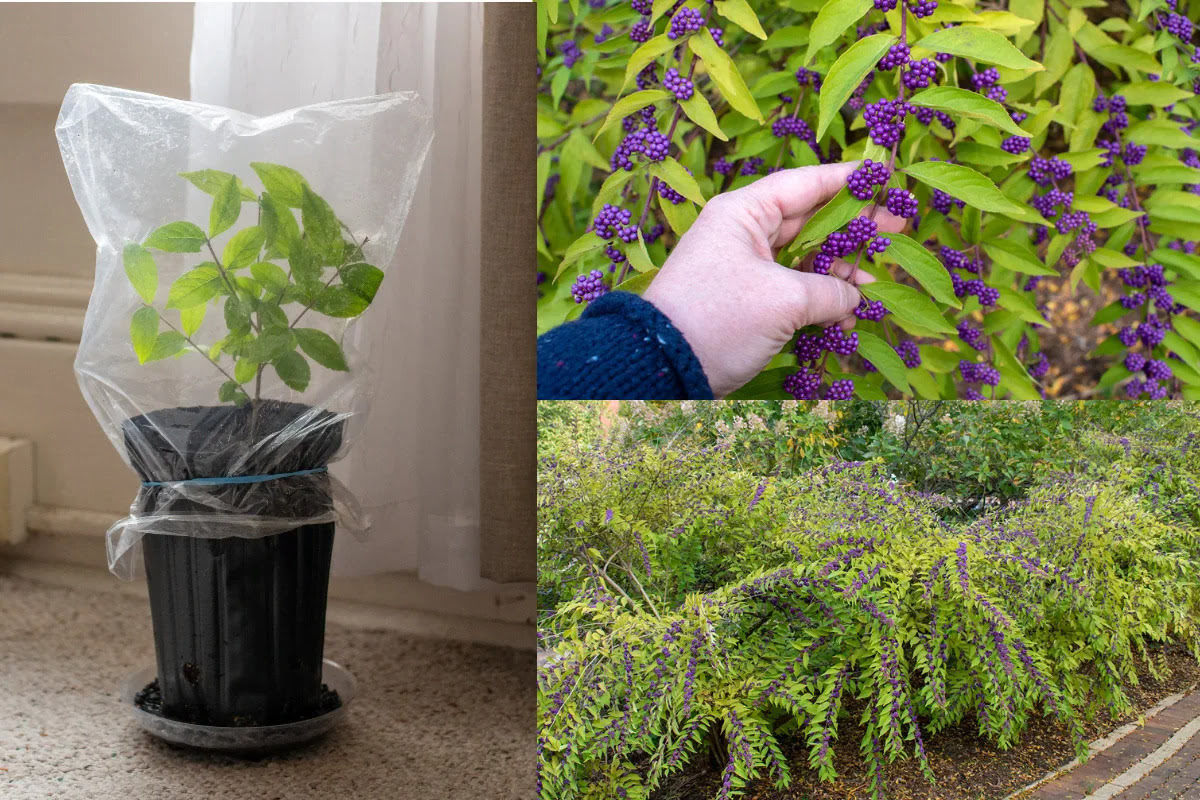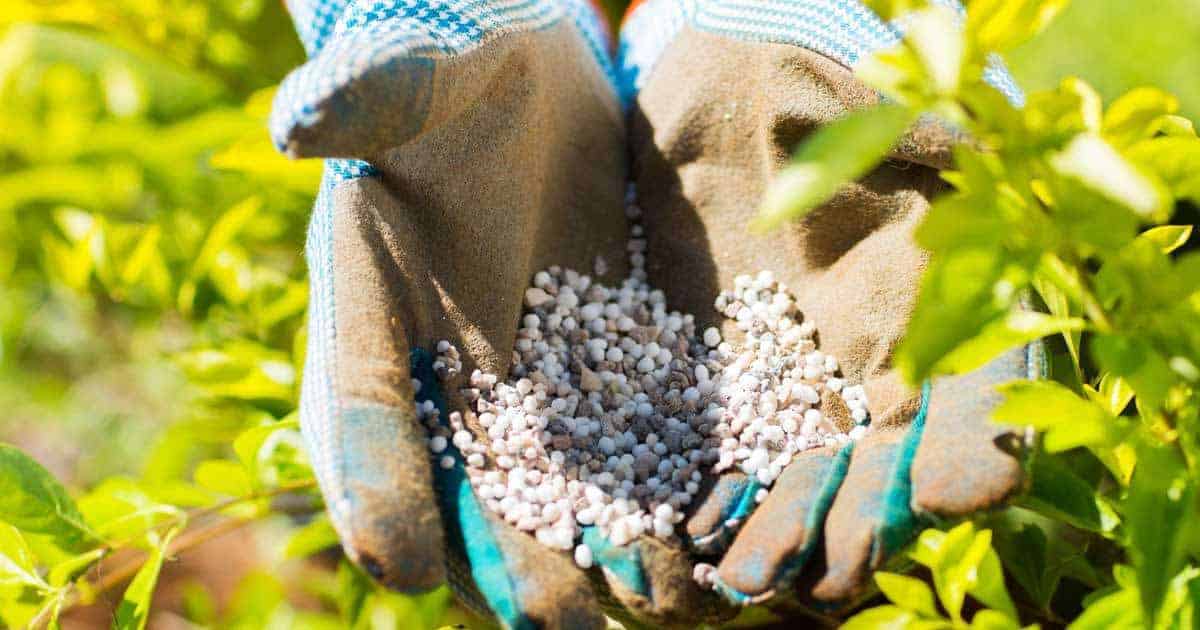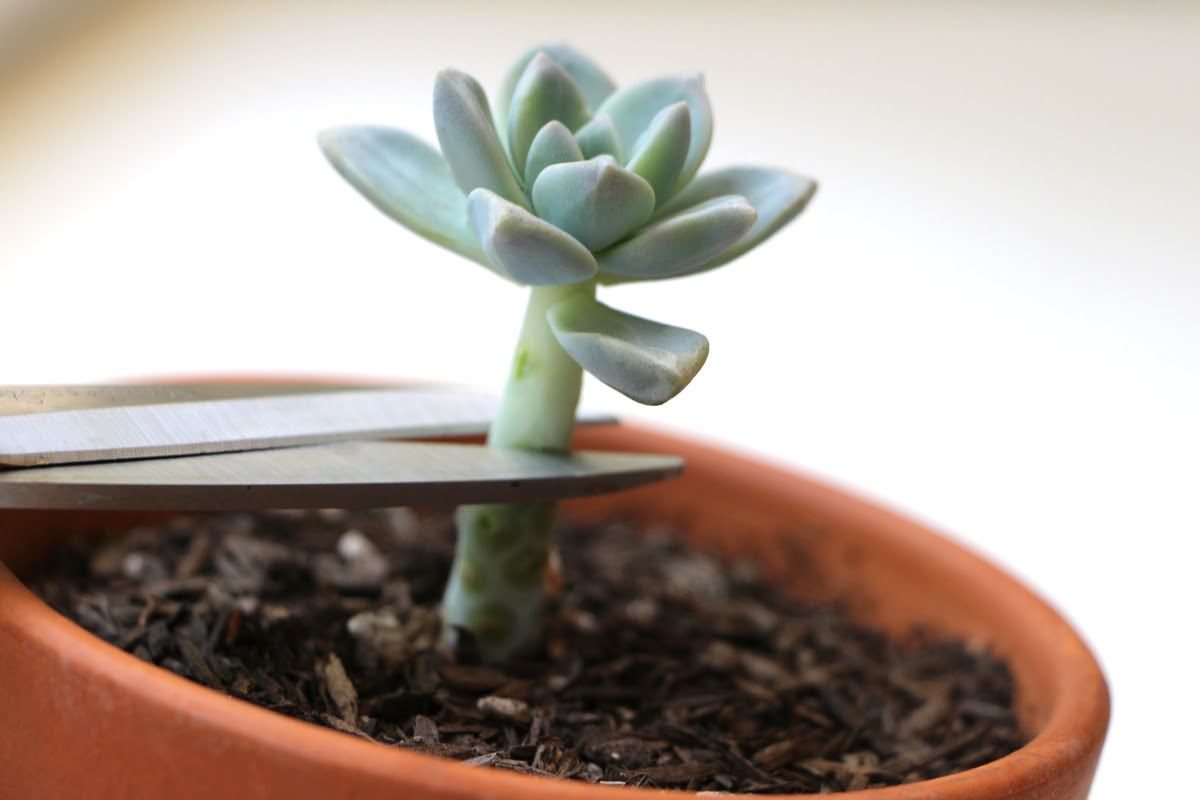Home>Gardening News and Trends>Gardening Trends>How To Use A Propagation Station


Gardening Trends
How To Use A Propagation Station
Published: February 3, 2024
Learn the latest gardening trends with our guide on how to use a propagation station. Discover tips and techniques for successful plant propagation.
(Many of the links in this article redirect to a specific reviewed product. Your purchase of these products through affiliate links helps to generate commission for Chicagolandgardening.com, at no extra cost. Learn more)
Table of Contents
Introduction
Introduction
Welcome to the wonderful world of plant propagation! If you're an avid gardener or a plant enthusiast, you may have heard about the magic of propagation stations. These nifty setups are not only trendy but also incredibly practical, allowing you to expand your plant collection without breaking the bank. In this comprehensive guide, we'll delve into the art of using a propagation station to multiply your greenery and create thriving new plant babies.
Whether you're a seasoned horticulturalist or a newbie with a budding passion for plants, propagation stations offer an exciting avenue to nurture and propagate your favorite botanical specimens. By the end of this article, you'll be equipped with the knowledge and confidence to set up and utilize a propagation station effectively, unlocking a world of possibilities for growing and sharing your beloved plants.
So, grab your gardening gloves and get ready to embark on a propagation journey that's both rewarding and enriching. Let's dive into the fascinating realm of propagation stations and discover how these innovative tools can elevate your gardening experience to new heights.
What is a Propagation Station?
Before we delve into the intricacies of using a propagation station, let’s first understand what this ingenious tool is all about. A propagation station is a dedicated space or setup designed for the purpose of propagating plants through various methods such as stem cuttings, leaf cuttings, or root division. It typically consists of containers, growing medium, and environmental controls to create an ideal environment for nurturing plant cuttings and encouraging root development.
Propagation stations come in a variety of designs, ranging from simple DIY setups to stylish commercially available kits. They often incorporate features such as adjustable humidity levels, integrated grow lights, and multiple propagation chambers, providing an optimal environment for young cuttings to thrive.
These stations serve as incubators for new plant growth, allowing gardening enthusiasts to expand their plant collection, share cuttings with friends, or simply multiply their favorite plants for a lusher indoor or outdoor landscape. Additionally, propagation stations offer a hands-on approach to plant propagation, fostering a deeper connection with the growth process and the satisfaction of nurturing new life from cuttings.
Furthermore, propagation stations are not limited to experienced gardeners; they are also an excellent educational tool for introducing children and beginners to the captivating world of plant propagation. By observing the propagation process firsthand, individuals can gain valuable insights into plant biology and develop a deeper appreciation for the natural world.
Now that we have a clear understanding of what a propagation station entails, let’s explore the key factors to consider when choosing the right propagation station for your specific needs and gardening goals.
Choosing the Right Propagation Station
When it comes to selecting a propagation station, several factors should be taken into consideration to ensure that it aligns with your gardening aspirations and the needs of your plant cuttings. Here are some essential considerations to guide you in choosing the right propagation station:
- Size and Capacity: Assess the space available for your propagation station and determine the number of cuttings you intend to propagate. Whether you have limited space for a compact setup or require a larger station for extensive propagation, choosing the right size is crucial for accommodating your plant cuttings effectively.
- Functionality and Features: Consider the specific features that will support successful propagation, such as adjustable humidity levels, built-in grow lights, ventilation options, and the number of propagation chambers. These features contribute to creating an optimal environment for encouraging root development and overall plant growth.
- Customization and Flexibility: Look for propagation stations that offer customization options, allowing you to adjust environmental factors based on the requirements of different plant species. The ability to customize temperature, humidity, and light settings can significantly enhance the success rate of your propagation endeavors.
- Quality and Durability: Invest in a propagation station made from high-quality materials that offer durability and longevity. A well-constructed station will provide a reliable and stable environment for your plant cuttings, ensuring their healthy development and sustained growth.
- Aesthetic Appeal: While functionality is paramount, the visual appeal of the propagation station also plays a role, especially if it will be displayed in your living space. Choose a station that complements your interior décor or showcases an attractive design that adds a touch of elegance to your propagation endeavors.
By carefully considering these factors, you can make an informed decision when selecting a propagation station that suits your gardening preferences and aligns with the specific requirements of the plant cuttings you intend to propagate. Once you’ve chosen the ideal propagation station, the next step is to set it up effectively to create an optimal environment for successful plant propagation, which we’ll explore in the following section.
Setting Up Your Propagation Station
Once you’ve chosen the perfect propagation station, the next exciting step is to set it up for optimal plant propagation. Follow these essential guidelines to create a nurturing environment for your plant cuttings:
- Assembling the Components: Unpack your propagation station and familiarize yourself with its components. Ensure that all parts, including propagation chambers, trays, humidity domes, and any additional accessories, are accounted for and in good condition.
- Choosing the Right Location: Select a suitable location for your propagation station, considering factors such as access to natural light, temperature consistency, and proximity to power outlets if using grow lights or heating elements. Ideally, place the station in a well-lit area with indirect sunlight to provide the necessary energy for photosynthesis without exposing delicate cuttings to harsh direct sunlight.
- Preparing the Growing Medium: Depending on the propagation method and the plant species you intend to propagate, prepare the appropriate growing medium, such as a well-draining soil mix, perlite, vermiculite, or a specialized propagation mix. Ensure that the growing medium is moist but not waterlogged to create an ideal rooting environment for the cuttings.
- Adjusting Environmental Controls: If your propagation station features environmental controls such as humidity and temperature adjustments, set them according to the specific requirements of the plant cuttings you are propagating. Different plant species may thrive in varying humidity levels, so tailor the settings to accommodate the needs of each cutting.
- Placing the Cuttings: Carefully take stem or leaf cuttings from your desired plants and place them into the prepared growing medium within the propagation chambers. Ensure that the cuttings are positioned securely and that their foliage does not touch the sides of the chamber, which can lead to excess moisture accumulation and potential fungal issues.
- Monitoring and Maintenance: Regularly monitor the propagation station to ensure that the growing medium remains consistently moist, and adjust environmental controls as needed. Keep a close eye on the progress of the cuttings, looking for signs of root development and new growth, and maintain a clean and sanitized environment to prevent disease or pest issues.
By following these steps, you can establish an inviting and nurturing space within your propagation station, setting the stage for successful plant propagation and the growth of healthy new plant specimens. With your station set up and your cuttings in place, it’s time to explore the fascinating process of propagating plants using this specialized setup, which we’ll delve into in the next section.
Propagating Plants with a Propagation Station
Using a propagation station opens up a world of possibilities for multiplying your favorite plants through various propagation methods. Here’s a step-by-step guide to propagating plants effectively within your propagation station:
- Stem Cuttings: Select healthy stems from the parent plant and make clean, angled cuts just below a node. Remove lower leaves to expose the nodes, which will encourage root development. Dip the cut end in a rooting hormone if desired, then gently insert the cutting into the prepared growing medium within the propagation chamber.
- Leaf Cuttings: For plants that propagate well from leaf cuttings, carefully detach healthy leaves from the parent plant and place them on the surface of the growing medium in the propagation chamber. Ensure that a portion of the leaf petiole is inserted into the medium to encourage root formation.
- Root Division: If propagating plants with a clumping or rhizomatous growth habit, such as certain ferns or spider plants, gently divide the root mass into sections, ensuring that each division has sufficient roots and foliage. Plant the divisions in the growing medium within the propagation chamber, providing ample space for new growth.
- Humidity Management: Maintain consistent humidity levels within the propagation chamber to create a humid microclimate that promotes root development and prevents excessive moisture loss from the cuttings. The enclosed environment of the propagation station helps retain moisture, supporting the establishment of new roots.
- Light and Temperature: Depending on the plant species, provide adequate light and maintain optimal temperature conditions within the propagation station. If your station includes integrated grow lights, adjust the lighting duration and intensity to support healthy growth without causing stress to the young cuttings.
- Patience and Observation: Monitor the progress of the cuttings regularly, looking for signs of new growth, root formation, and overall plant health. Be patient, as the propagation process may take several weeks to months, depending on the plant species and environmental conditions.
By following these propagation techniques and providing a nurturing environment within your propagation station, you can successfully propagate a wide range of plant species, from decorative houseplants to prized garden perennials. As the cuttings develop roots and establish themselves, it’s essential to transition them to their new growing environment and provide the care they need to flourish, which we’ll explore in the next section.
Caring for Propagated Plants
Once your plant cuttings have successfully rooted and transitioned into independent plants, it’s crucial to provide them with the care they need to thrive in their new environment. Here are essential steps for caring for propagated plants after they have established roots:
- Gradual Acclimatization: If the propagated plants were initially housed in a high-humidity environment within the propagation station, gradually acclimate them to the ambient conditions of their intended growing space. This process helps prevent shock and allows the plants to adjust to the new humidity and light levels.
- Transplanting: Once the propagated plants have developed a healthy root system, carefully transplant them into individual pots filled with well-draining potting mix. Ensure that the pots have adequate drainage to prevent waterlogged soil, which can lead to root rot.
- Light and Water: Place the newly potted plants in an area with suitable light conditions based on their specific light requirements. Water the plants thoroughly but allow the soil to dry slightly between watering sessions to promote healthy root growth and prevent waterlogged conditions.
- Feeding and Nutrient Support: After the propagated plants have settled into their new pots, consider providing them with a balanced, diluted fertilizer to support their growth. Select a fertilizer formulation suitable for the plant species and follow the recommended application guidelines.
- Monitoring and Maintenance: Regularly inspect the propagated plants for signs of growth, overall health, and any potential issues such as pests or diseases. Prune as necessary to encourage bushier growth and remove any damaged or diseased foliage.
- Long-Term Care: As the propagated plants continue to grow and mature, adjust their care routine based on their specific needs, including repotting as they outgrow their containers and providing appropriate support or training for climbing or vining species.
By providing attentive care and creating an optimal growing environment for your propagated plants, you can witness the fruits of your propagation efforts as the plants flourish and thrive. Whether you’re expanding your indoor plant collection or enhancing your outdoor garden with propagated specimens, the process of caring for these new additions is both rewarding and fulfilling.
Conclusion
Congratulations on embarking on a journey into the captivating realm of plant propagation using a dedicated propagation station. By exploring the art of propagating plants, you’ve unlocked a world of possibilities for expanding your plant collection, sharing your favorite specimens with fellow enthusiasts, and nurturing new life from cuttings. The utilization of a propagation station not only offers practical benefits but also fosters a deeper connection with the growth process, allowing you to witness the marvel of new plant life taking root.
Throughout this guide, we’ve delved into the fundamental aspects of propagation stations, from understanding their purpose and functionality to selecting the right station for your needs and setting it up effectively. We’ve also explored the intricate process of propagating plants using various methods within the propagation station and the essential care required for the newly rooted specimens as they transition into their growing phase.
As you continue your propagation journey, remember that patience, observation, and a nurturing touch are key elements in the successful propagation of plants. Each new root and emerging leaf represents a testament to your dedication and the remarkable resilience of nature. Whether you’re propagating beloved houseplants, rare botanical treasures, or garden favorites, the art of plant propagation opens doors to endless possibilities and a deeper appreciation for the natural world.
With your newfound knowledge and the practical insights gained from this guide, you’re well-equipped to embark on a fulfilling propagation adventure, creating a flourishing tapestry of greenery that reflects your passion for plants and the joy of nurturing new life. Embrace the art of propagation, and may your propagation station become a hub of growth, discovery, and botanical wonder for years to come.



